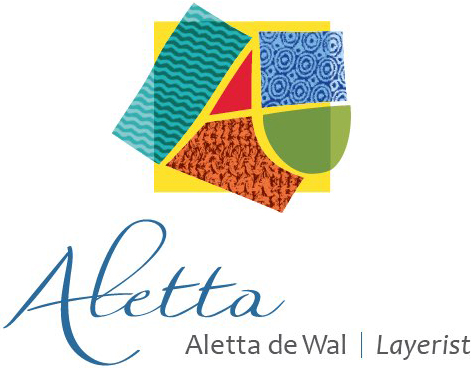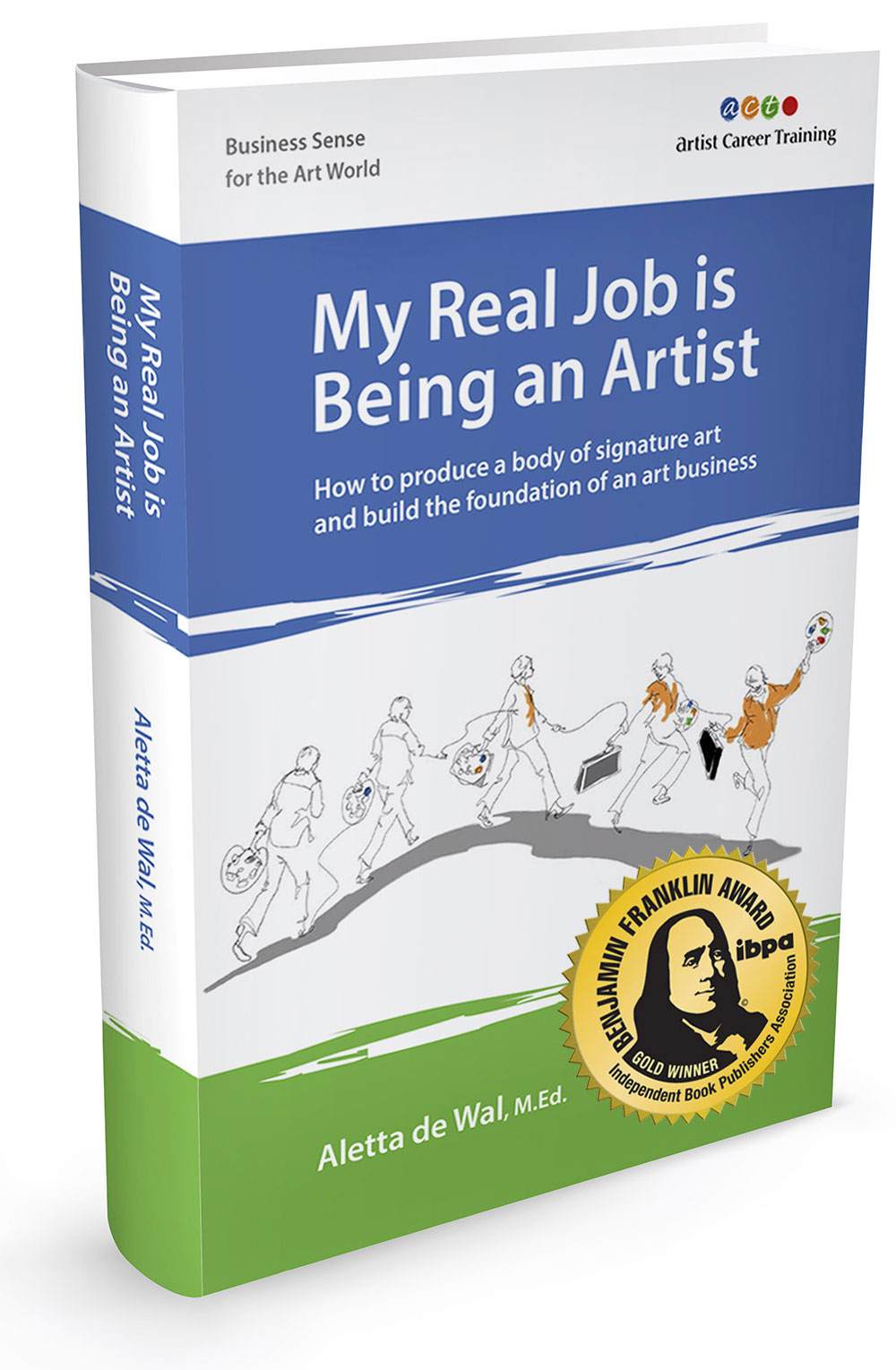How Pat Fiorello Makes a Living Making Art
 Pat Fiorello creates uplifting paintings inspired by nature.
Pat Fiorello creates uplifting paintings inspired by nature.
For 20 years Pat worked in the corporate world. Pat has an M.B.A. from the Harvard Business School and was Vice President, Marketing for Coca-Cola and Nabisco. She left her “first” career to pursue her passion for art and has been doing so successfully ever since she founded Fiorello Art & Design.
A Signature Member and Past President of the Georgia Watercolor Society, Pat’s paintings have graced over 65-juried shows and a dozen one-woman shows. In addition to selling and licensing her art, Pat teaches workshops in the U.S. and Europe. Pat has helped hundreds of artists develop their business skills through her work with arts organizations, workshops and private coaching.
A.C.T.: What prompted you to start your professional art career? What makes an artist professional?
I started painting as a hobby and a way to get away from the rigors of corporate life. The more I painted, the more it became a passion. About 8 years ago, I switched from corporate business to art business to be more aligned with my purpose in life - creating a world of beauty, love and inspiration. I also wanted a more flexible, richer and satisfying lifestyle. I consider art a business and my intention is to make a profit.
A.C.T.: What makes an artist professional?
Commitment to learn, grow and create on a consistent basis. The key is mindset - that this is your work, it’s important - not just a casual leisure time pursuit. It’s a serious commitment. It’s not just when you are in the mood.
Communicate professionally. Do what you say. Be responsible. Don’t make it challenging for others to do business with you. If something happens, get together and clean it up. Collaborate to make it a win for everyone.
A.C.T.: What is your artistic direction? What is your "life's work" as an artist - what legacy do you want to leave??
 "Giverny Trellis II"My intention is to share beauty so people can be present to it. For a couple of years I worked on a cloud series. Now I am doing more garden scenes. I portray landscapes, gardens, and florals in a “Romantic Realism” style. My paintings are representational, but idealized rather than photorealistic.
"Giverny Trellis II"My intention is to share beauty so people can be present to it. For a couple of years I worked on a cloud series. Now I am doing more garden scenes. I portray landscapes, gardens, and florals in a “Romantic Realism” style. My paintings are representational, but idealized rather than photorealistic.
I also teach art, so part of my legacy is passing on the gift of art to others and to help them succeed. If others had not shared in the past, we artists wouldn’t be where we are today. It’s our responsibility to pass on our techniques and visions.
A.C.T.: What is your art business direction and what are your business goals?
My top goal is to create art regularly. I usually have a series I work on for several months or more. Since I’ve been painting full time, I create over 100 paintings annually.
In traditional marketing, we used to do market research and then come up with a product to satisfy needs. I think art is different. Painting what you think others want quickly deteriorates to production and it shows in the work. You lose the spirit and creativity that good art conveys.
I always counsel artists to be true to what they want to create rather than paint to what the market wants. Be true to yourself, to what inspires you, and what you are passionate about. Then find other people who also love that. You don’t need everyone to love what you do - just enough art lovers to make a viable living for yourself.
A.C.T.: How do you manage your time, money and energy?
It’s a delicate balance of where to spend my time and energy. People often think we are in our studios seven days a week, but that’s not the case. I juggle painting, marketing, teaching and other activities, so I set out each year with goals and game plan for each month of what I need to focus on and get done.
Typically on Mondays I do a lot of the administrative and marketing activities. I get them out of the way so they don’t fragment my painting time or distract me while I am in the studio. Tuesdays I teach and prepare for upcoming classes and workshops. Wednesday I am usually in a class for my own learning, so that’s a painting day. I generally hold Thursday and Friday free from meetings and outside commitments so I have that time available for painting. Sometimes I offer workshops on Saturdays, but I try to keep that to just one weekend a month so I don’t take away from the time I have with my husband and also so that I get a break. At the end of the month I update my web site, handle accounts and bookkeeping.
Of course it doesn’t always work out as neatly and structured as it sounds – but that’s the general flow of things that I shoot for in planning my activities.
If you are serious about selling your work, devote half your time to create art and the other half to market and manage the business side of things (e.g. working with galleries, updating website, keeping track of inventory, hanging shows, submitting to shows, even reading art magazines). Being in your own business, it’s easy to work 24/7. There’s a lot to do so you need to keep an eye on the balance to make sure one thing or another does not consume you. Find a rhythm that works for you and make sure to have mental white space for creating.
A.C.T.: What peak moments have you had as an artist? What makes it the best job in the world?
 "Tuscan Sunlight"There are peak moments creating and peak moments in terms of career accomplishment. Some experiences that fit both. My highlights include:
"Tuscan Sunlight"There are peak moments creating and peak moments in terms of career accomplishment. Some experiences that fit both. My highlights include:
~ Memories of creating certain paintings that just seemed to magically come together and flow.
~ Painting memories from days on location in special places.
~ Being accepted into my first juried show.
~ Teaching painting workshops in Monet’s Garden in Giverny, Tuscany.
~ Gaining Signature status in the Georgia Watercolor Society.
~ Having a painting published in SPLASH, the Best of Watercolor book, published by North Light books.
~ Receiving appreciation from students I have helped in workshops
~ Coaching artists who have gone on to accomplish their dreams.
A.C.T.: How do you define and celebrate success?
I define success as being able to live life on your own terms. I am grateful that I can choose how I spend my time to do the things I enjoy and share my gifts with others. Getting feedback that my work makes people smile makes me feel really good.
In the corporate world, I had performance reviews, bonuses and perks. Being in business for myself, there’s no one to give me the recognition I had in a business setting, so occasionally after I accomplish something big, like a major show or commission, I’ll buy a gift for myself- like a wonderful new brush or art book.
A.C.T.: What obstacles have you encountered in your art business and how have you handled them?
I sometimes encounter resistance from galleries who do not want to carry watercolors or works on paper. I spent time educating collectors and galleries. Because of marketplace realities, I have expanded into oils the past few years so I have both options available now. It also gives me more price points. I enjoy both mediums so I do both, and keep the subject matter consistent with my style.
Getting caught up in “limiting” thinking about the economy is something to watch out for. Know it is a reality, but don’t let it discourage you. Things will come back. People are still buying art. Just keep moving forward.
A.C.T.: What opportunities has a professional approach to your career brought you that you might otherwise not have had?
I have had opportunities because of my professional approach. Doing business is always a partnership, so I develop trust with people. They know that they can count on me and that I will deliver what I said I would.
It’s very important to be “easy to do business with”. Being organized helps me stand out as a committed professional. This is especially important with partners like galleries, and venues like schools.
Give people what they ask for when they need it. If you drop the ball, it effects their reputations too. So honor your word under all circumstances and be open in your communication. People will be happy to work with you again and refer you to others because they know they can count on you to deliver.
A.C.T.: Who are your role models and mentors? What was the best advice they gave you?
I studied watercolor for many years with Mel Stabin and Betty Carr, among many other talented artists and instructors. Not every artist is automatically a good teacher - but these two excel at both. From their generous sharing, I learned about the roller coaster of the art business and that it is a lifetime journey.
Technically I learned to keep things simple. Capture the essence of a subject. No need to spell out every detail, but to be true to my vision.
As an artist I learned to be true to what you love, work hard at it – and paint, paint, and paint.
As a teacher I learned to be generous with and supportive of students.
A.C.T.: What is your art marketing strategy? What promotional materials and actions do you use most often?
I view where I sell my work as a portfolio approach. That is, I don’t have all my eggs in one basket. I am clear on my audience and seek out opportunities to get my work in front of them. I find venues and times to exhibit that fit with my lifestyle. I sell mostly originals, some giclées and cards. I also license my images for home décor products. I work with a few galleries, hold an annual studio show, one woman or group shows that I coordinate, public venues like Callaway gardens, churches, do commissions etc..
My website is definitely an invaluable tool for communicating with people and having my art visible. It doesn’t mean I get lots of requests for my art just by having it, but it helps build opportunities. It’s a virtual brochure so people can get an immediate experience of my work.
 "Winter White"A woman was searching for a particular kind of flower to use for her needlepoint company. She found it on my web site and we worked out a licensing arrangement.
"Winter White"A woman was searching for a particular kind of flower to use for her needlepoint company. She found it on my web site and we worked out a licensing arrangement.
I don’t do anything fancy. I use a business card, website and e-mails. I have an extensive mailing list with different categories for people who are interested in my various art activities and teaching. For major shows, I send out press releases, postcards and email announcements to my mailing list.
I am learning how social media, blogs etc. can help gain exposure for my art without a major time and energy drain.
Every artist needs a marketing strategy. Decide what you work is about and what you love. Consider who might be interested in your work. Then set about finding them. Don’t get side tracked by events or venues that don’t relate to your work and your audience.
A.C.T.: What changes have you experienced in the art market and how have you navigated them? What lessons have you learned?
Art is a luxury item so some people are holding off larger purchases. The gallery business is more challenging- not sure if it’s the economy, technology, different ways to go to market or all of the above. I partner with galleries any way I can, knowing they are under a lot of pressure. I do demos’, classes, send announcements to my mailing list and other things that generate traffic and income.
If business is a little slow, it’s a good time to work on your art and business skills. My classes were busier last year.
A.C.T.: What legal measures do you take to protect your work?
I have a clause in my invoices to customers letting them know that I retain the rights to use the image. I have specific contracts for specific images with licensing partners.
A.C.T.: What advice would you pass on to artists who want to succeed in any economy?
Be true to yourself, what you want to create and what gives you joy. Live a life that you love and express yourself in the world.
Set goals and work towards them. Get coaching from others who are more experienced and qualified. Look for mentors. Find people who are successful and see what they are doing. Be with other artists so you know what to expect and have others to bounce ideas.
Keep a positive attitude and long-term perspective. Being rejected by one show or one gallery is not the end of the world in the scheme of a long-term career. This is your passion (not just a job- there’s a lot easier ways to make a living) - so keep at it no matter what. Avoid naysayers and negative people. Find people who support you and be around “can do”, positive people who will cheer you on.
An art career is a marathon not a sprint. There is no linear path, like being a lawyer. There are many ways to create an art business. If one doesn’t work, there are other ways to go.
In the words of Winston Churchill “Never, never, never give up”. And in the words of Henry Ford ”If you think you can or you think you can’t, you’re right”.
A.C.T.: How do you recommend that artists develop their careers?
In partnership with A.C.T.*, I have been able to share both my business and art experience to help other artists make a better living making art.
We share a mission to eradicate the myth of the starving artist and to empower artists to be clear about economic reality and how take charge of your financial health. “Making Money as an Artist: Taking Charge of Your Bottom Line” will help you uncover blind spots where your history with money may be limiting you today, get clear on your actual financial results and guide you in developing a realistic plan to achieve your financial goals. The end result is that you make more money and keep more money.
I entered 65 shows and learned a lot in the process. To help artists Avoid wasting time, money and energy entering juried shows that are just not right and use ways to assess and approach shows to get results
we created “The Ins and Outs of Juried Shows.”
Learn how the jurying process works from someone who's been on both sides of the fence- entering and running juried shows.
_____________________________________________________________
* FTC Disclosure: When we find artists like Pat Fiorello who have deep, proven experience in a topic that will help you make a better living making art, we put them front and center. When these fine folks offer services and products that are first class, sometimes we agree to help each other get the word out to you with an "affiliate" arrangement, which means that we will earn a small commission for referring you to their resources. Those are marked with an asterisk.











